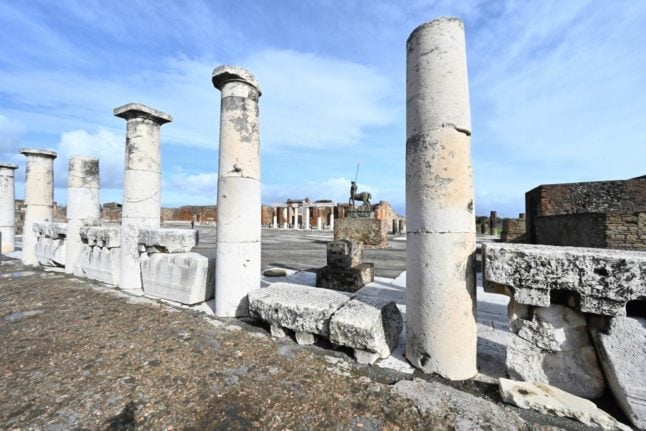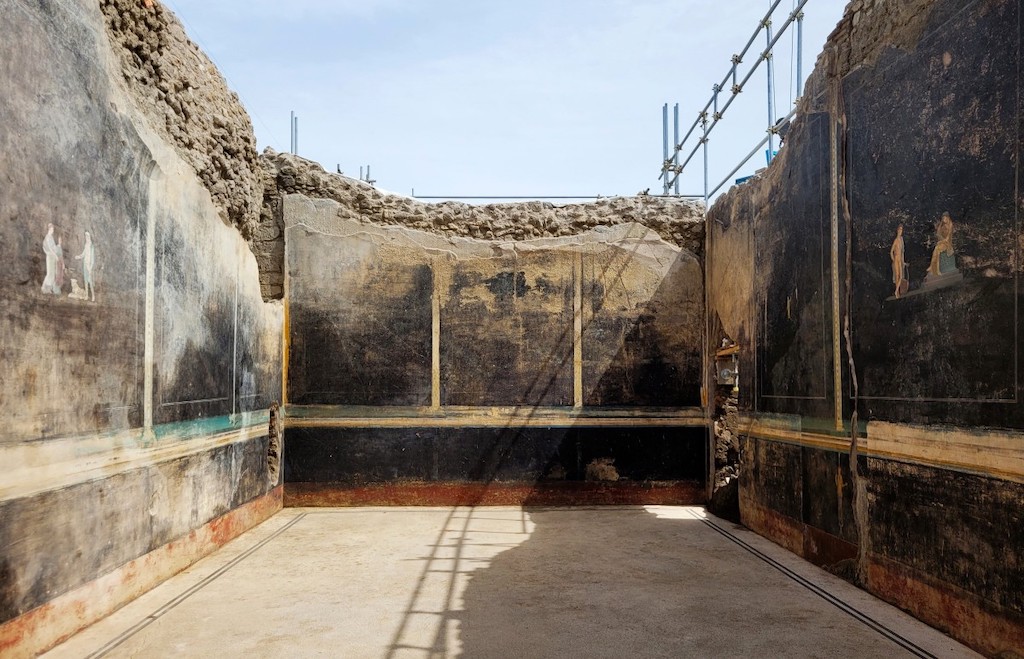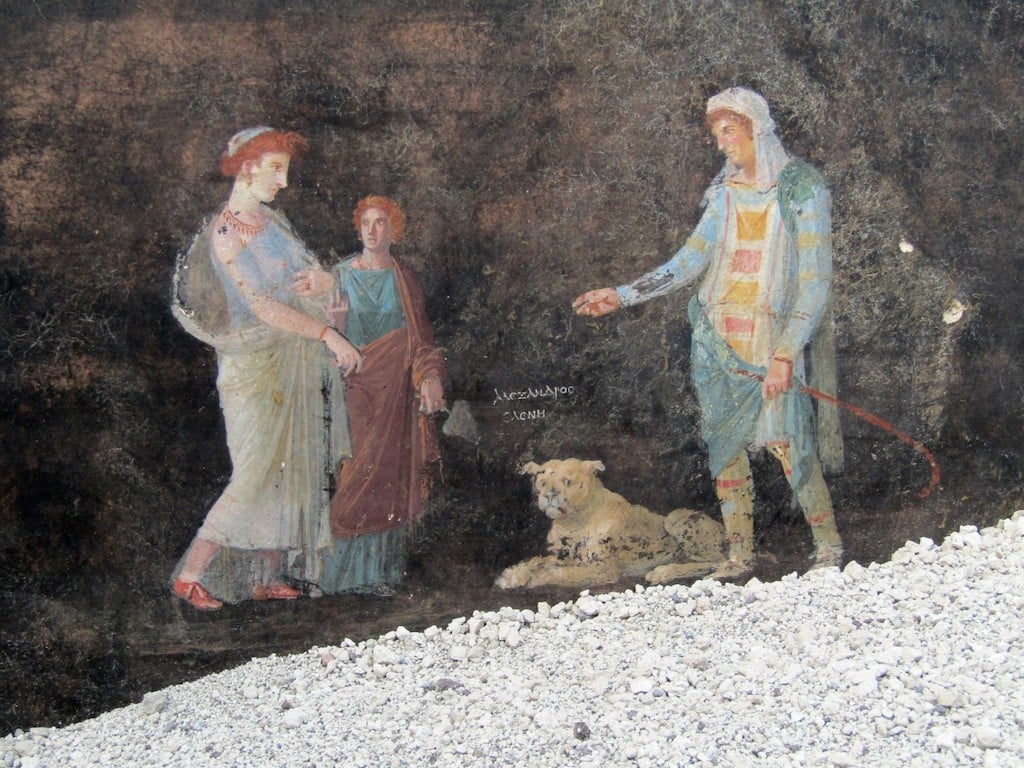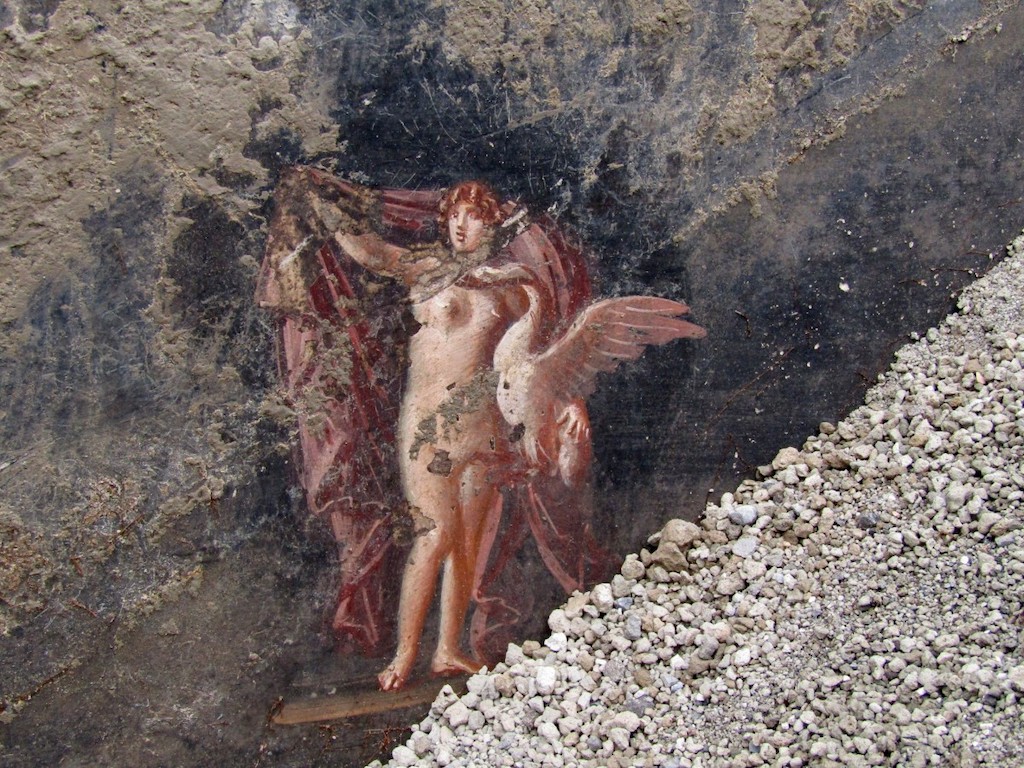The 2,000-year-old painting – which was discovered in the middle of a half-crumbled wall during recent digs at the sprawling archaeological site – depicts a silver platter holding a round flatbread, alongside fresh and dried fruits such as pomegranates and dates and a goblet filled with red wine.
“What was depicted on the wall of an ancient Pompeian house could be a distant ancestor of the modern dish,” said experts at the archaeological park in a statement.
#Pizza #Pompei pic.twitter.com/HbM2QqWWL8
— CiccioBuonfi 🖇📐🌋🔎🖌✏️ (@fbuonfi) June 27, 2023
The devastating volcanic eruption of Mount Vesuvius in 79 AD buried the Roman city in thick ash, hiding from view countless treasures that archaeologists continue to slowly bring to light.
READ ALSO: Two more victims of volcanic eruption found in Italy’s Pompeii ruins
The fresco is believed to refer to the “hospitable gifts” offered to guests, following a Greek tradition dating back to the 3rd to 1st century BC and described by imperial Roman-era writers including Virgil and Philostratus.
Pompeii’s director, Gabriel Zuchtriegel, said the newly uncovered fresco shows the contrast between “a frugal and simple meal, which refers to a sphere between the bucolic and the sacred… and the luxury of silver trays and the refinement of artistic and literary representations”.
“How can we fail to think, in this regard, of pizza, also born as a ‘poor’ dish in southern Italy, which has now conquered the world and is also served in starred restaurants,” Zuchtriegel added.
READ ALSO: Italy plans high-speed rail link between Rome and Pompeii to boost tourism
The new excavations revealed an atrium of a house that included an annex with a bakery, partially explored in the late 19th century.
“In the working areas near the oven, the skeletons of three victims have been found in the past weeks,” said experts at the park.
Archaeologists estimate that 15 to 20 percent of Pompeii’s population died in the eruption, mostly from thermal shock as a giant cloud of gases and ash covered the city.






 Please whitelist us to continue reading.
Please whitelist us to continue reading.
Member comments